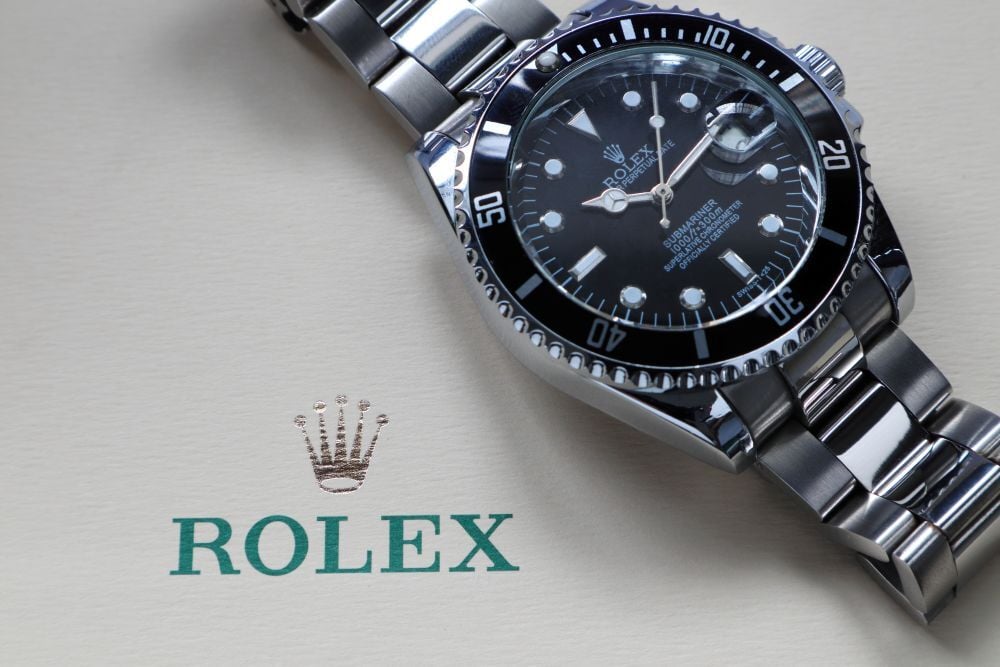Rolex Submariner: A Guide to the World’s Most Revered Dive Watch
If there’s one timepiece that embodies the archetypical sports watch, it’s undoubtedly the Rolex Submariner. Launched in 1953, it was the first wristwatch to achieve water resistance to 100 metres – a technical breakthrough that carried Rolex well beyond the genteel world of the dress watch. The inaugural reference 6204 introduced a design language that still echoes across the brand’s catalogue today: the rotating bezel, luminescent hour markers, and robust Oyster case. The Submariner reached a wider audience in the 1960s, propelled into the mainstream by Sean Connery in the first James Bond film, Dr. No. In the years since, it has attracted a passionate collector base drawn both to rare vintage pieces and playful limited editions, such as the green-bezel ‘Kermit’.

Rolex’s Conquest of the Deep – The Origins of the Submariner
By the early 1950s, Rolex had already proven its engineering credentials. The Explorer had gone to Everest, worn by Sir Edmund Hillary and Tenzing Norgay on the first confirmed summit, while the waterproof Oyster crossed the English Channel on the wrist of Mercedes Gleitze – the first British woman to swim both the Channel and the Straits of Gibraltar. With recreational diving on the rise for the first time, the sea at depth was the next challenge.
While most Rolex models have stayed close to their original designs, the Submariner has evolved quite visibly. The earliest references – 6204 and 6205 – were subtle and slim, with 37mm cases and no crown guards. The more rugged Submariner aesthetic came a decade later with the 5512 and its companion 5513, which increased the depth rating to 200 metres and introduced the crown guards. The 5513 remained in production for 25 years and is the reference that many consider the ‘classic’ Submariner.
Today, the Submariner is 41mm and houses Rolex’s latest-generation automatic calibres: the 3230 for the no-date version, and the 3235 for the model with a date complication. True to its function, it’s water-resistant to 300 metres and features a rotatable Cerachrom bezel marked in 60-minute increments to track dive times and decompression stops. The dial also uses Rolex’s proprietary Chromalight lume, which emits a crisp blue glow in low-light conditions, ensuring legibility even in dark, murky waters.
At retail, the Submariner in Oystersteel is priced at AED 37,800 (ref. 124060), while the white gold Submariner Date (ref. 126619LB) comes in at AED 190,600. On the secondary market, values vary significantly by reference. Standard Oystersteel models can start from around AED 30,000, while rare vintage pieces – such as the no-date 6538 ‘James Bond’ Submariner – can reach up to AED 680,000, even in well-worn condition.
Read More: Rolex Datejust
From 007 to the MoD: The References That Shaped the Submariner’s Legacy
The Submariner 5512
For many collectors, this is where the Submariner effectively begins. Introduced in 1959, the 5512 brought a bigger case, crown guards, and the first chronometer-certified movements in the line. With no date and crisp symmetry, it shaped the design language of the Submariner (and arguably all other sport watches) for decades to come. Relative to its more popular counterpart – the 5513 – the 5512 is rare and highly prized on the secondary market, often commanding six-figure sums.
The ‘James Bond’ Submariner
James Bond did for the Submariner what Paul Newman did for the Rolex Daytona. The 6538 – otherwise known as the ‘James Bond’ Submariner – was worn in several early 007 films and has been a collector’s grail ever since. Though never named on-screen, its clean black bezel and oversized ‘big crown’ became instantly iconic – a lasting embodiment of mid-century suave. The 6538 was produced for a handful of years in the late 1950s and is one of the more ‘transitional’ Submariners: not quite the deep-water diver we know it as today, but not really a dress watch either. Steeped in Hollywood mythos and forever tied to the image of Bond, it remains one of the most sought-after pieces on the vintage market.
Read More: Rolex Daytona
The ‘MilSub’
As far as functionality goes, the so-called ‘MilSub’ is the most rugged, purpose-built Submariner. Produced in the 1970s for the British Ministry of Defence, it wasn’t a separate reference but a military-modified version of the standard Submariner – most commonly the 5513 or 5517. These watches were adapted for active duty with fixed spring bars for NATO straps, a fully graduated bezel, and distinctive sword hands for improved legibility in low light. The dial bore a circled ‘T’, denoting the use of tritium lume – a mildly radioactive compound standard at the time.
Most MilSubs were either damaged or lost in service, with only a handful making it back to the civilian world. Today, they can command up to AED 500,000 on the secondary market – especially those in authentic, ‘battle-worn’ condition.
The ‘Kermit’ (Ref. 16610LV)
To mark the Submariner’s 50th anniversary in 2003, Rolex released the reference 16610LV – nicknamed the “Kermit” for its bright green aluminium bezel. It was the first time the colour had been introduced into the Submariner line, provoking mixed reactions. Some collectors balked at the departure from classic black, while others embraced the playful, slightly irreverent twist on the traditional dive watch.
The Kermit was only in production for seven years and featured a few key distinctions beyond the bezel – most notably the larger ‘maxi’ dial with bigger hour markers and hands. It paved the way for future coloured variants like the ‘Hulk’ and ‘Starbucks’, but as the original anniversary edition, the Kermit has developed a cult following of its own. On the secondary market, prices have steadily climbed, with clean early examples now selling for upwards of AED 90,000.
Read More: Most Expensive Rolexes Ever Sold
Final Thoughts
Over the past seventy years, the Rolex Submariner has remained both culturally relevant and technically impressive, occupying that rare space between utility and high fashion. Retail waitlists are notoriously long, but the secondary market offers remarkable depth for those looking to acquire a Submariner with historical weight. Whether through auction or private client, working with a trusted house like Sotheby’s ensures access to authenticated pieces and expert guidance. To browse upcoming watch auctions, be sure to keep an eye on the Sotheby’s calendar.



